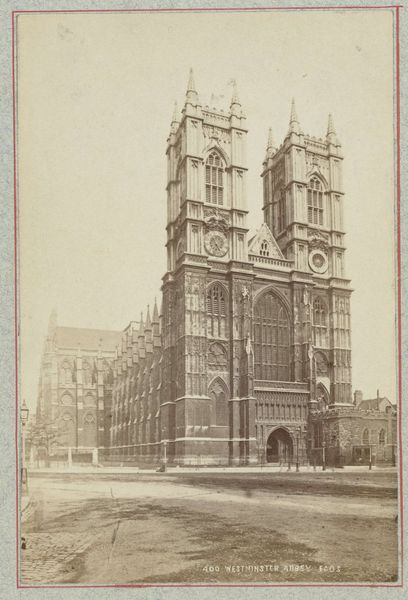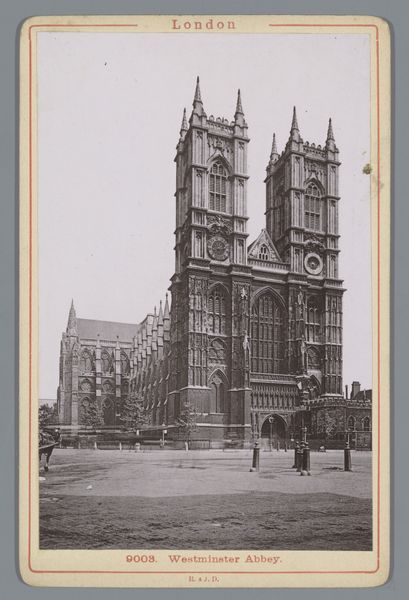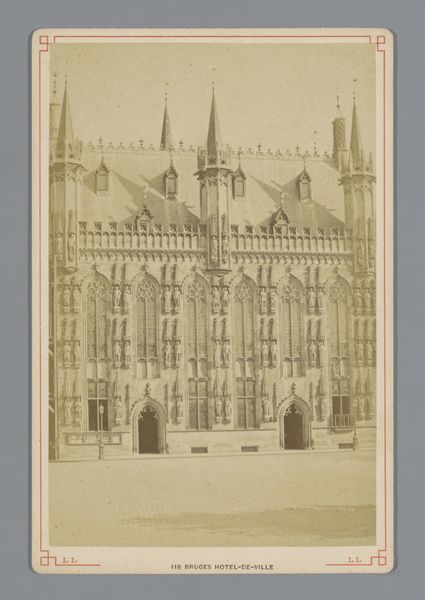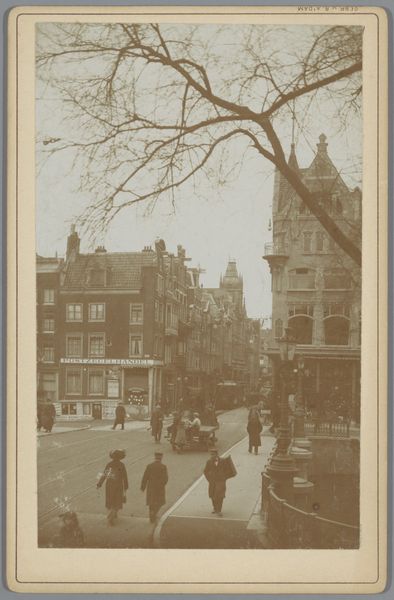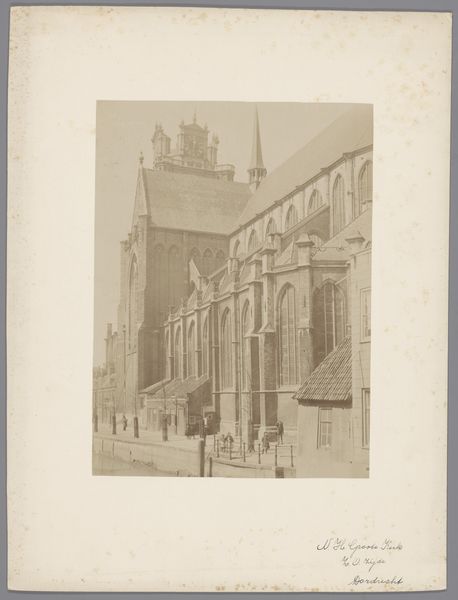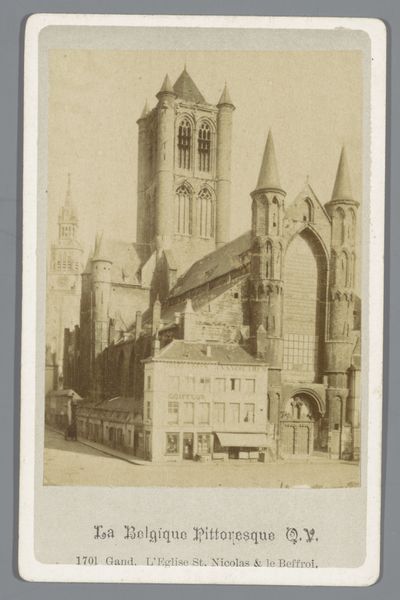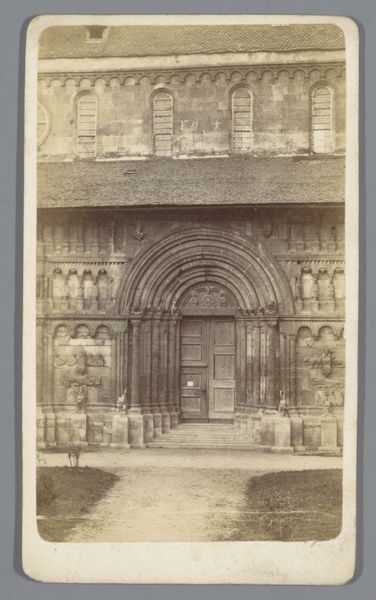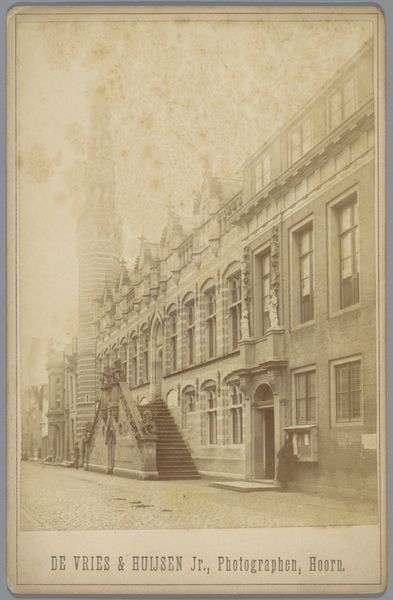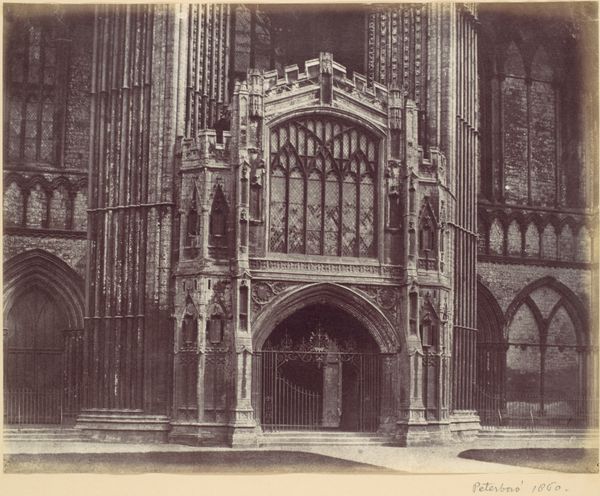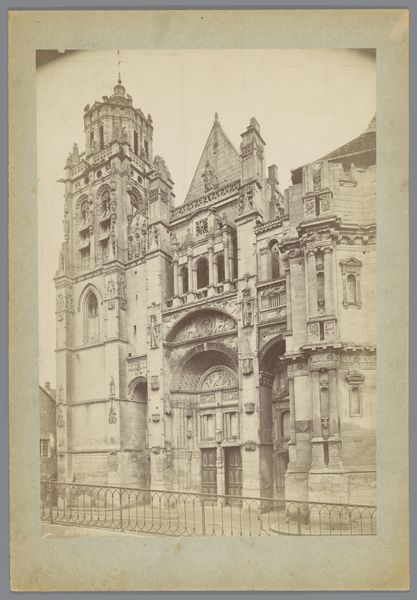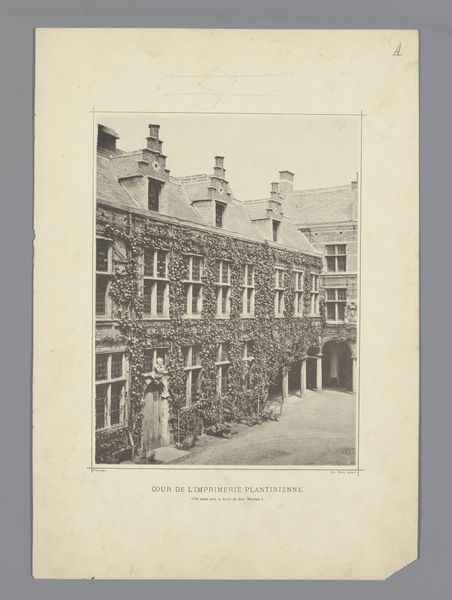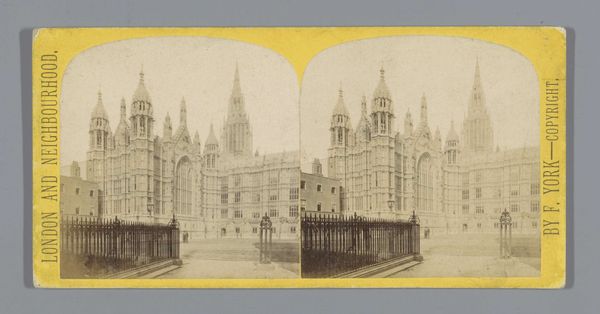
print, photography
# print
#
landscape
#
photography
#
cityscape
Dimensions: height 105 mm, width 64 mm
Copyright: Rijks Museum: Open Domain
Editor: So, this photograph is called *Peer's Entrance van het Palace of Westminster, Londen,* and it’s attributed to Frederick York, placing it somewhere between 1855 and 1885. It definitely has a rather formal and imposing feel. I’m curious about how its imagery relates to its time period. What visual cues do you notice that stand out? Curator: Immediately, I see the emphasis on architectural detail. Note the Gothic Revival style, harking back to an imagined medieval past, a potent symbol of British identity and continuity. The very stone seems to embody the weight of history and tradition. It's fascinating how this building visually reinforces the concept of enduring power. Editor: That’s interesting – so the architecture itself becomes a kind of symbolic language? Curator: Precisely! Think about what the Palace of Westminster represents: the seat of British law and governance. By emphasizing the Gothic style, York isn't simply capturing a building, he’s invoking the cultural memory of a certain kind of authority – almost romanticizing the political landscape. Consider the solitary figure standing guard; what symbolic role does that figure perform? Editor: He looks almost like a sentinel, reinforcing that idea of power and authority that you mentioned. It makes me wonder what other layers of meaning might be hidden within the details. Curator: Exactly. Consider the camera’s lens. Why select this angle, positioning us on the outside, peering in through this structured portal? What emotions does this image invoke and for whom? It’s an exercise in understanding the visual vocabulary of power and representation in Victorian England. Editor: I see what you mean! This isn't just a pretty picture; it's communicating ideas about governance and tradition. It’s been enlightening to understand the deeper meaning through those symbols. Curator: Agreed. The symbolism inherent to such artwork creates fascinating insight and discourse across time, and from society to society.
Comments
No comments
Be the first to comment and join the conversation on the ultimate creative platform.
